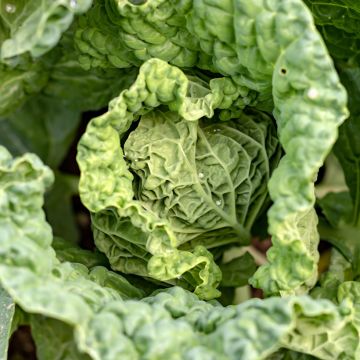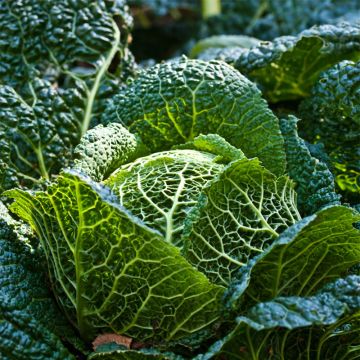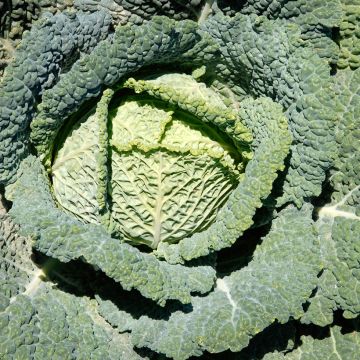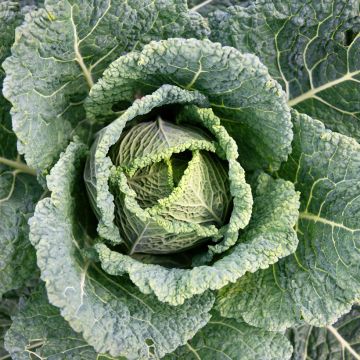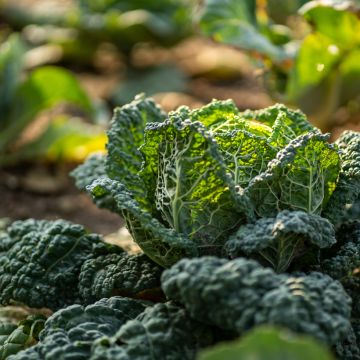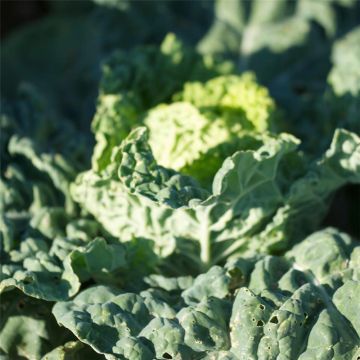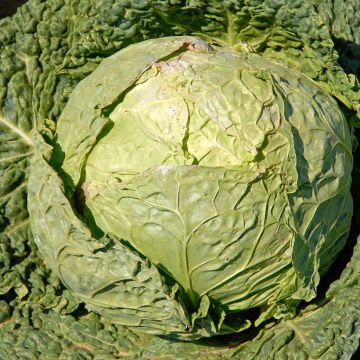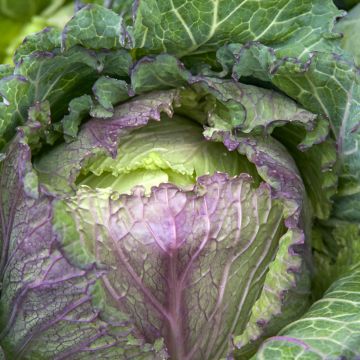
Growing Cabbage and Savoy Cabbage
Tips and advice for a productive vegetable garden
Contents
White cabbage and Savoy cabbage are two prized vegetable varieties, cherished for their nutritional richness and culinary versatility. They can be enjoyed raw in coleslaw, grated, in soups, stews, braised, stir-fried, fermented or as sauerkraut. These vegetables are treasure troves of vitamin C, B6 and B9, fibre and minerals. Highly hardy, though emblematic of winter, they can be sown and harvested almost year-round. Growing these cabbages in your vegetable patch may seem challenging, but with the right techniques, success is within reach. Discover the essential steps for planting and successfully cultivating these delicious vegetables while maximising their yield. Enjoy abundant and flavoursome harvests!
Also explore our comprehensive cabbage guide
About Head Cabbage and Savoy Cabbage
The Cabbage (Brassica oleracea) is a herbaceous vegetable plant belonging to the large Brassicaceae family (formerly Cruciferae). Head cabbage and Savoy cabbage are two varieties cultivated for their dense, leafy heads, which can be eaten raw or cooked in a multitude of recipes. The Head cabbage (Brassica oleracea capitata, with capitata meaning “head” in Latin) actually encompasses White cabbages with smooth heads like red, white or green cabbages, as well as crinkled-head cabbages (Brassica oleracea var. sabauda) such as the Savoy cabbage, composed of deeply blistered or crinkled leaves.
- The head cabbage or white cabbage, therefore, is characterised by its round, compact head with smooth, tightly packed leaves. Its large, slightly flattened heads are distinguished by their colour (green, red, or white) and harvest time (early, mid-season, or late). Head cabbage is particularly rich in vitamins C and K, fibre, and antioxidants, making it an excellent choice for supporting a balanced diet.
- The Savoy cabbage, also called Milan cabbage or crinkled cabbage, is recognisable by its large, crinkled and blistered leaves, darker and with more pronounced veins than those of head cabbage. It comes in dark green, light green or features green leaves tinged with purple. It offers a slightly milder flavour and more tender texture, particularly appreciated in stews or soups. This type of cabbage is also an important source of nutrients, providing vitamins A, C, and K, as well as minerals like potassium and magnesium while being, like all cabbages, low in calories.
Read also
How to make homemade sauerkraut?How to sow cabbage and Savoy cabbage?
When to Sow?
Direct sowing in situ is possible, but preparing or purchasing seedlings for transplanting, which will be planted in the vegetable garden once all risk of frost has passed, is the most common method.
Generally, headed cabbages and Savoy cabbages can be sown from February (under cover) to June for a harvest from August to December. However, each cabbage variety has an ideal sowing period, which may vary in length: this information is provided on the seed packet, and it’s important to refer to it. Thus, for a harvest in:
- spring, sow from mid-August to late October (e.g., ‘Cœur de Bœuf Moyen de la Halle’ Cabbage, ‘Express Eersteling’ Cabbage)
- summer, sow from mid-February to late March (e.g., ‘Tête de Pierre’ Cabbage, ‘Wirosa’ Savoy Cabbage, ‘Manon’ Savoy Cabbage)
- autumn, sow from early March to mid-May (e.g., ‘Tête Noire 3’ Cabbage, ‘January King’ Savoy Cabbage)
- winter, sow from mid-May to mid-June (e.g., ‘Caïd’ Cabbage, ‘Quintal d’Alsace’ Cabbage, ‘Pontoise 2’ Savoy Cabbage)
How to Sow?
Pot Sowing
Sow under cover from late autumn to late winter or in a nursery bed in the garden for the rest of the year.
- Fill pots or a seed tray with good-quality seed compost.
- Sow the seeds at a depth of 1 to 2 cm.
- Cover lightly with sieved compost or vermiculite.
- Water gently with a fine spray.
- Keep warm and in good light, at a minimum temperature of 7°C and a maximum of 30°C, depending on the variety, most often around 15°C.
- Keep the substrate moist but not waterlogged until germination.
- Once the seedlings are developed enough to handle, prick out the strongest ones into individual pots.
- Transplant into the garden once the risk of frost has passed.
- When planting, usually when the seedlings have at least 4 or 5 leaves, space them 35 to 80 cm apart, depending on their growth.
Direct Sowing
You can also sow directly in situ once frost is no longer a concern.
- Sow the seeds in drills spaced 40 cm apart, at a depth of 1 to 2 cm, spacing each seed about 5 cm apart.
- Cover with a thin layer of fine soil.
- Firm down and water gently to avoid displacing the seeds.
- Keep the soil moist until germination.
- Thin out, leaving only one plant every 40 cm or so.
→ Discover all our secrets for successful cabbage sowing
Discover other Milan Cabbage
View all →Available in 1 sizes
Available in 1 sizes
Available in 2 sizes
Available in 1 sizes
Available in 1 sizes
Available in 1 sizes
Available in 1 sizes
Available in 1 sizes
Available in 1 sizes
Available in 1 sizes
Where to plant headed cabbage and Savoy cabbage?
Growing these two types of cabbage is easy in all climates as long as you meet their few requirements. They prove to be quite hardy and are particularly well-suited to cool, rainy regions.
The white cabbage (or ‘cabbage’) and the Savoy cabbage thrive in full sun, but can tolerate light shade in warmer regions. They are hungry plants and require well-manured soil, previously enriched with compost or well-rotted manure (3 to 4 kg per m2). Plant them in deep, well-worked and loose soil, rich in nitrogen and potassium.
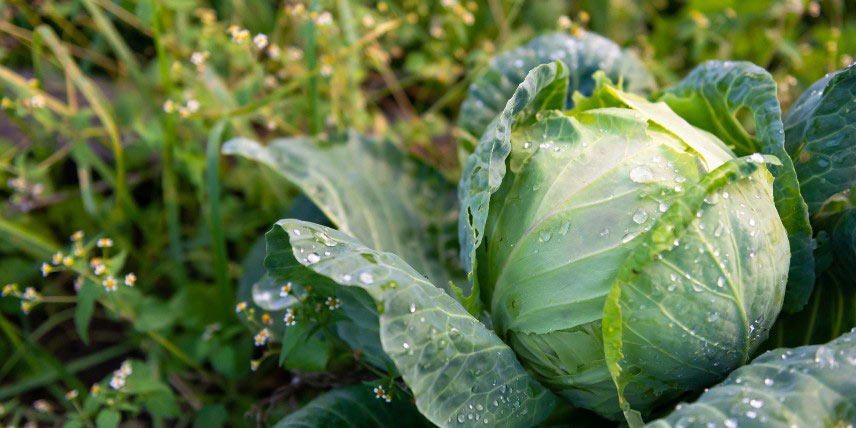
White cabbage
Read also
Sowing and Transplanting CabbagesWhen and how to plant them?
Once well developed, the cabbage plants can be planted in their final position in the vegetable garden. You can also choose from our vegetable plug plants.
- Start by soaking the root balls in water for a few moments before planting.
- Prepare the soil by weeding, loosening it with a spade or garden fork, then raking the soil with a rake to create a fine tilth. Don’t hesitate to add compost or manure too.
- Dig planting holes, spacing them 50 to 65 cm apart in rows and 40 to 35 cm between each plant.
- Place the plants deep into the holes, up to the first true leaves: new roots will form along the buried stem, ensuring better anchorage in the soil.
- Fill in by drawing fine soil around the plants, then firm gently.
- Water generously.
- Early in the growing season, earth up by drawing soil around the base of the cabbages.
How to care for them?
Watering
Cabbages thrive in soil that remains moist. Regular watering, without overdoing it, is the secret to a good harvest. Cabbage maintenance also involves regular weeding and hoeing. Since cabbages grow slowly, these tasks need to be repeated over a long period. They can be spaced out or minimised if you mulch the soil with thin, successive layers of pre-dried grass clippings, mixed with dead leaves, for example.
Fertilisation
Cabbages are heavy feeders that deplete the soil, which is why they require excellent base fertilisation. During cultivation, you can spread 2 to 3 handfuls of mature compost around the base of the plants.
Pest and Disease Control
Cabbages are quite susceptible to diseases and pests. During cultivation, they may be threatened by:
- cabbage root fly, whose larvae devour the roots,
- cabbage white butterfly, whose caterpillars ravage the foliage,
- flea beetles, which perforate the leaves of brassicas in general.
Various control methods exist (cardboard collars against the fly, spraying Bacillus thuringiensis, manual removal of caterpillars…), but the best prevention to keep them at bay is to securely place an insect-proof mesh.
Regarding diseases, clubroot is the most virulent. It manifests as wilting foliage along with the appearance of nodules on the stem base and roots. There is no natural solution, but the best prevention is to practise crop rotation by not growing cabbages in the same spot for at least 5 years. Some varieties, such as the Savoy cabbage ‘Kilaton F1’, are known to be resistant. Cabbages are also susceptible to blind bud disease, caused by the larvae of a tiny fly that inhibits growth, preventing the head or flowers from developing.
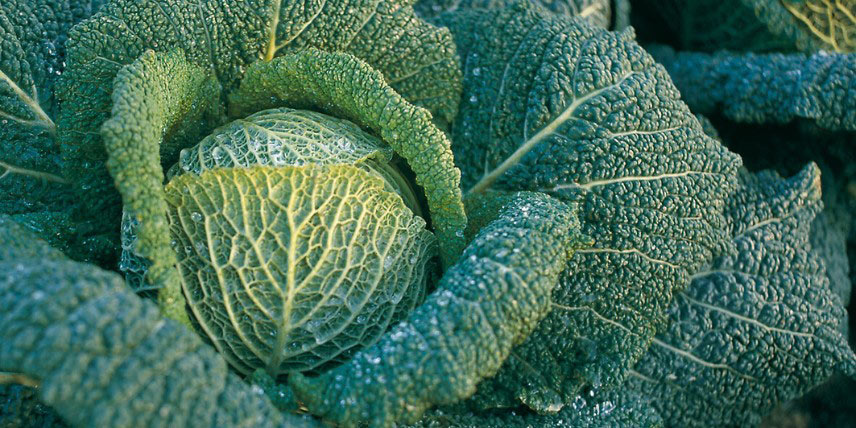
Savoy cabbage ‘Wirosa F1’
How to harvest and store them?
Harvesting
Harvest occurs between 4 and 7 months after planting, from August to December, depending on the variety. It should be done when the cabbage forms a nice head and before the leaves start to yellow; simply cut the head with a knife.
Storage
There are several ways to store cabbages. Keep cabbages in the refrigerator’s vegetable drawer, where they can last for 2 to 3 weeks. For longer storage, these cabbages can be frozen for up to 12 months after blanching. They can also be preserved for many months through lacto-fermentation. This method involves slicing the cabbage into thin strips, salting it, and then packing it tightly into jars. The salt draws out the cabbage’s juices, creating an acidic environment where lactic acid bacteria can thrive, fermenting and preserving the cabbage.
How to pair cabbages in the vegetable garden?
Cabbages pair well with many vegetables, such as lettuce or tomatoes. They thrive near celery, whose scent repels cabbage white butterflies. They also form beneficial partnerships with beetroot, cucumbers, squashes, courgettes, potatoes, or with legumes like beans and peas. Avoid planting them near strawberries and fennel, as well as courgettes and leeks. Consider surrounding your cabbages with helpful flowers like Marigolds, Zinnias, Cosmos, and Nasturtiums, which will attract aphids away from your cabbages.
It’s important to practice crop rotation in plots where cabbages have been grown to prevent disease buildup: wait four years before replanting them in the same spot.
- Subscribe!
- Contents


































